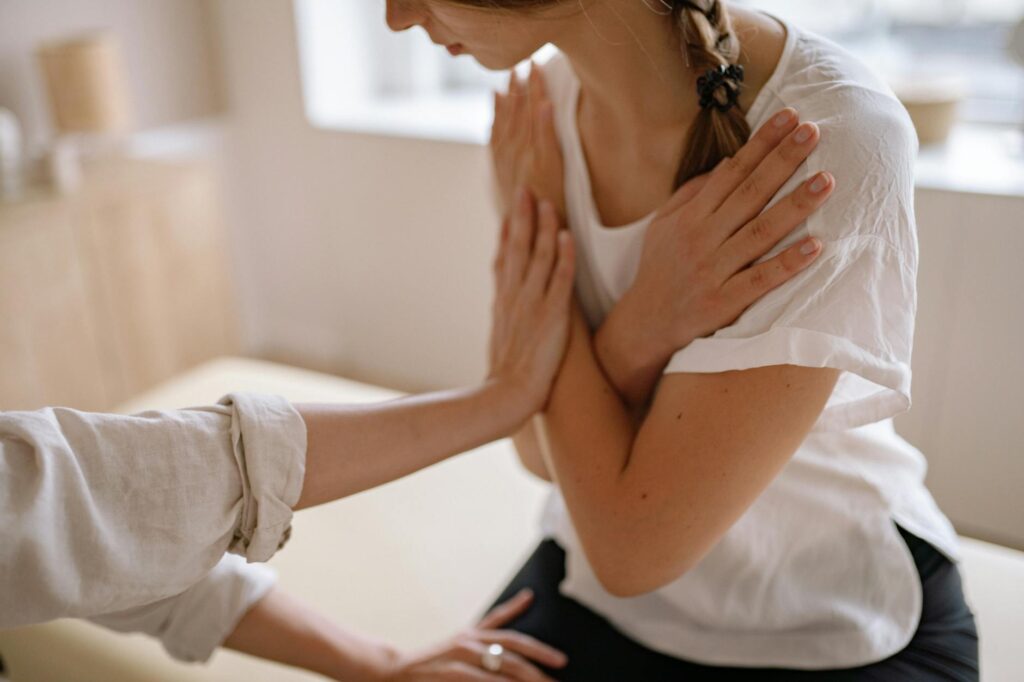Vera-Ellen, an American dancer and actress, was vocal about the significance of good posture.
She once said “good posture takes inches off my waist. I have a feeling of lifting my rib cage off my hip bones, of flattening the space between my navel and my backbone. If you stand sideways in front of a long mirror you can see how eliminating a slump gives a more youthful line to your body.”
Everything we do changes how we hold ourselves — whether you’re slouching looking down at your phone on your commute home from work or sitting at your desk for hours studying through the night. Posture should be considered in everything we do, just ask experts qualified with online DNP programs.
What Is Posture?
Posture can be defined as “the position of the body in the space, and is controlled by a set of anatomical structures.”
What Affects Posture?
Within the anatomical structure, the musculoskeletal system is important for our posture. The musculoskeletal system is made up of bones, muscles, joints, and other tissues that provide support and movement to the body.
Footwear, stress, poor nutrition, and slouching affect our posture immensely.
Footwear with no toe box restrains our legs from having free movement which impedes good posture.
The lack of the right vitamins such as calcium and vitamin D in your diet heightens the risk of developing osteoporosis, a “bone disease that develops when bone mineral density and bone mass decreases, or when the structure and strength of bone changes.”
Slouching makes the spine fragile and very susceptible to accidents. The spine is one of the most important parts of the skeletal system; it connects various parts of the skeleton.
It’s important to take notice of your posture in your everyday life, avoiding slouching wherever you can.
Why Does it Matter for Our Health?
Active posture (the integrated action of many muscles required to maintain active positions) can be either static or dynamic. The way you hold your body when you are standing, sitting, or kneeling is known as static posture, while the way you position your body while you are moving is dynamic posture.
Having good dynamic and static posture helps reduce the likelihood of developing aches and pains in different parts of the body, particularly the back, neck, and shoulders.
The risk of developing joint conditions such as arthritis is potentially reduced when you practice and maintain good posture. Data from the Centers for Disease Control and Prevention showed that the age-adjusted prevalence of diagnosed arthritis in adults in the US was 18.9%.
What Are the Benefits of Good Posture?
Benefits of good posture include:
Better mood and energy
Better posture helps you stay more focused and full of energy, which can boost work efficiency.
Good bone, joint, and muscle health
Having excellent posture alleviates stress on joints and muscles in the body, which can reduce the chances of developing conditions like osteoarthritis.
Excellent breathing and fewer headaches
When you sit upright, there is more room for air to circulate within the body which provides a better breathing experience and potentially decreases the likelihood of headaches.
Improved spine and neck health
With less slouching, your spine and neck bones are likely to be in better health. There is also less chance of developing back pains.
Tips on Improving Posture
Simple yet effective ways of improving your posture include:
1. Taking moments of conscious breathing to remind yourself of maintaining proper posture.
2. Exercises like squeezing the muscles in and around your lower abdomen can strengthen your posture and maintain a healthy spine.
3. Maintaining a healthy diet, especially one rich in milk, cheese, green leafy vegetables, broccoli, cabbage, okra, soya, tofu, and fish with bones.
4. Wearing well-fitting and comfortable shoes with plenty of room for your toes.
5. Participating in physical activity such as brisk walking, running, jogging, and swimming.
Correlational studies have shown that there is a significant relationship between physical activity and posture.
If you’ve been neglecting your posture, or underestimating its importance, then think again. Hopefully, this article has convinced you that this is a consideration worth your time. Stay conscious of your posture, and take active steps to improve it everyday.

